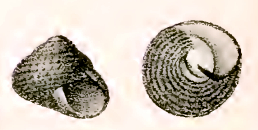Chlorodiloma adelaidae facts for kids
Quick facts for kids Chlorodiloma adelaidae |
|
|---|---|
 |
|
| Drawing with two views of a shell of Chlorodiloma adelaidae | |
| Scientific classification | |
| Synonyms | |
|
Chlorodiloma adelaidae is a type of sea snail. It is a mollusk that lives in the ocean. These snails belong to the family Trochidae, which are often called "top snails." This name comes from the cone-like shape of their shells.
Contents
About the Chlorodiloma adelaidae Snail
The Chlorodiloma adelaidae snail is quite similar to another snail called Chlorodiloma crinita. The main difference is a small detail inside its shell.
Shell Features
The shell of Chlorodiloma adelaidae looks very much like its close relative. It has the same colors and patterns. The overall shape of the shell is also identical. The key difference is that Chlorodiloma adelaidae does not have a small "tooth" at the base of its columella. The columella is the central pillar inside a snail's shell.
What is a Columella?
Imagine the central axis or core around which the shell spirals. That's the columella. In some snails, this central part might have a small bump or "tooth" near the opening. Chlorodiloma adelaidae simply lacks this specific feature.
Where These Snails Live
Chlorodiloma adelaidae is a marine species, meaning it lives in the sea. It is found only in Australia. You can find these snails off the coasts of South Australia and Tasmania. This means they are endemic to Australia, which means they naturally live only in that specific area.

